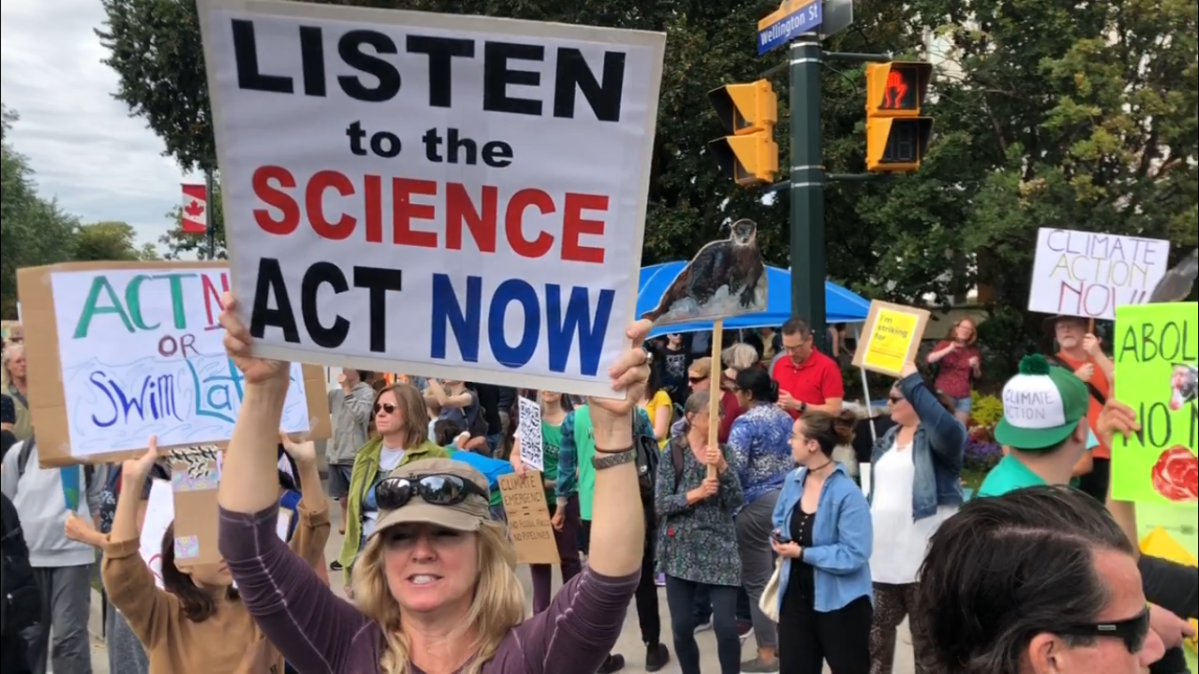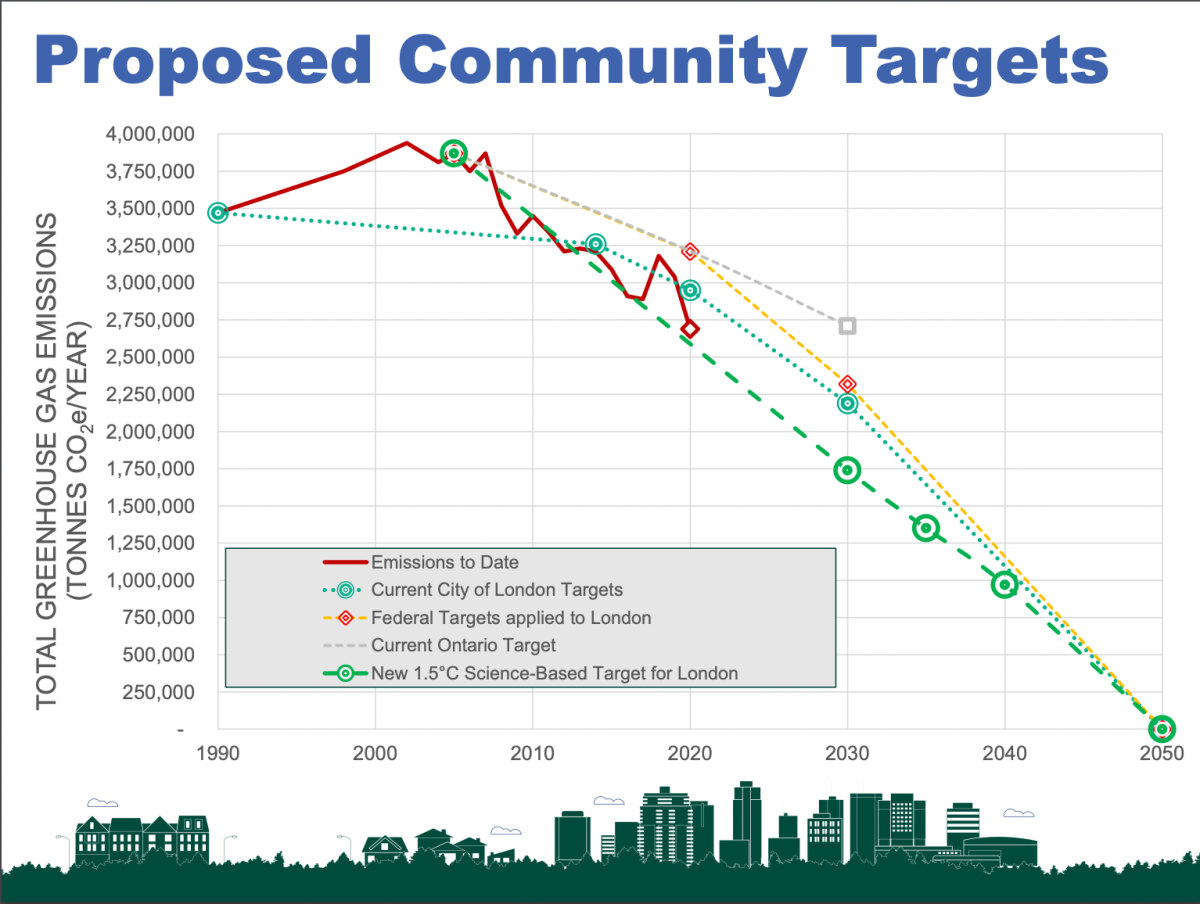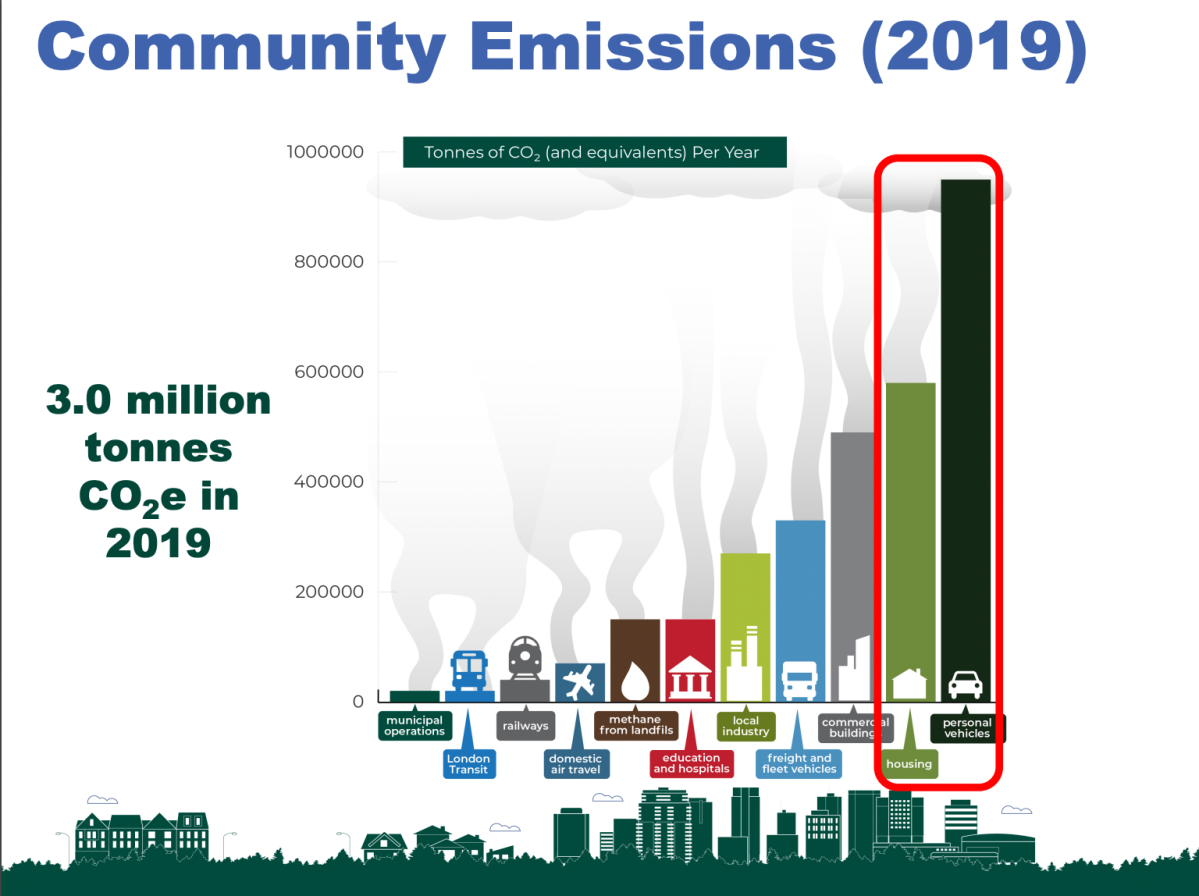The City of London has released the first draft of its Climate Emergency Action Plan (CEAP), to help with the goal of reaching net-zero emissions by 2050.

In 2019, the City of London declared a climate emergency and first announced its goal to develop a plan to reach net-zero greenhouse gas (GHG) emissions by 2050.
As well as reducing GHG emissions, the plan aims to improve the community’s resistance to climate change impacts and includes actions for individuals, households and businesses to help tackle the issue.
“It represents a living plan, one that will be monitored and updated regularly so that we’re able to make sure progress is occurring as planned and that we have the ability to adjust and account for things like emerging technology and partnership opportunities,” said Kelly Scherr, deputy city manager of environment and infrastructure.
The plan is proposing a goal of reaching a 55-per cent reduction in GHG emissions by 2030, which would be increased to 65-per cent reduction by 2035, 75 per cent by 2040, and then reach net-zero by 2050.
The report from the city said the targets are in keeping with the Paris Agreement and that it will give Londoners a workable timeframe to make the change.
The plan was developed by city staff through community feedback from individuals and businesses, science and reviewing other communities’ plans on a municipal, provincial and federal level.

Get daily National news
The report shows that people and businesses reached out 26,000 times and the city received 2,700 direct submissions.
“Some of the themes that emerged from those who engaged included a desire to see action to reduce emissions and improve resilience in a number of different categories, including transportation and mobility, buildings, development, consumption and waste and of course, protecting enhancing natural areas,” said Mike Fabro, manager of climate change planning for London.
“In addition to emissions reduction and resilience improvements ideas, there’s also a clear desire for many people to be engaged in the work as it moves forward and to see strong efforts to inspire and empower people and organizations to act.”
The plan is calling for changes to residential and corporate buildings to make them more energy-efficient.
By 2030 it outlines a goal of making sure that the majority of Londoners live within walking distance to their daily needs and that they reduce the number of in-town automobile trips by 30 to 50 per cent from 2019.
Personal vehicles were the largest producer of CO2 emissions by far in 2019 in London.
In 2010 the average home in London produced 6.6 tonnes per person of GHG emissions, but the plan hopes to reduce that to 3.5 by 2030.
In order to reduce emissions on an individual level, staff say that will fall to Londoners.
“Some households will embrace this very quickly, other households will find changes challenging and I think in all respects that this is what we’re referring to. Change does not come without hard work,” said Jay Stanford, director of climate change, environment and waste management.
The plan also looks to address corporate emissions, 89 per cent of which are made of fleet vehicles and buildings.
With so many people and agencies involved, from individuals, businesses and then the city, staff say the exact cost of the plan is not known.
“For the next two years, we’re tackling it with funded projects. The Mobility Master Plan is a big one, we’re going to be implementing the Green Bin program, we’re doing work on our wastewater treatment plant as part of future operations,” said Jay Stanford.
“We are embedding climate change actions and discussion to capitalize on the dollars that are already approved.”
The draft CEAP is set to be tabled at the next Strategic Priorities and Policy Committee meeting on Feb. 8.
Following the tabling, the plan will then be posted on the Get Involved London website, where residents can send in feedback before a public participation meeting is held at a later date.















Comments